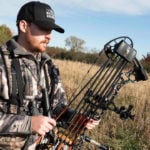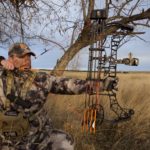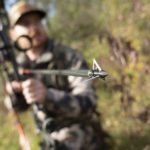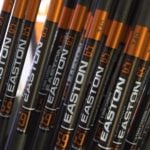Bow Accessories
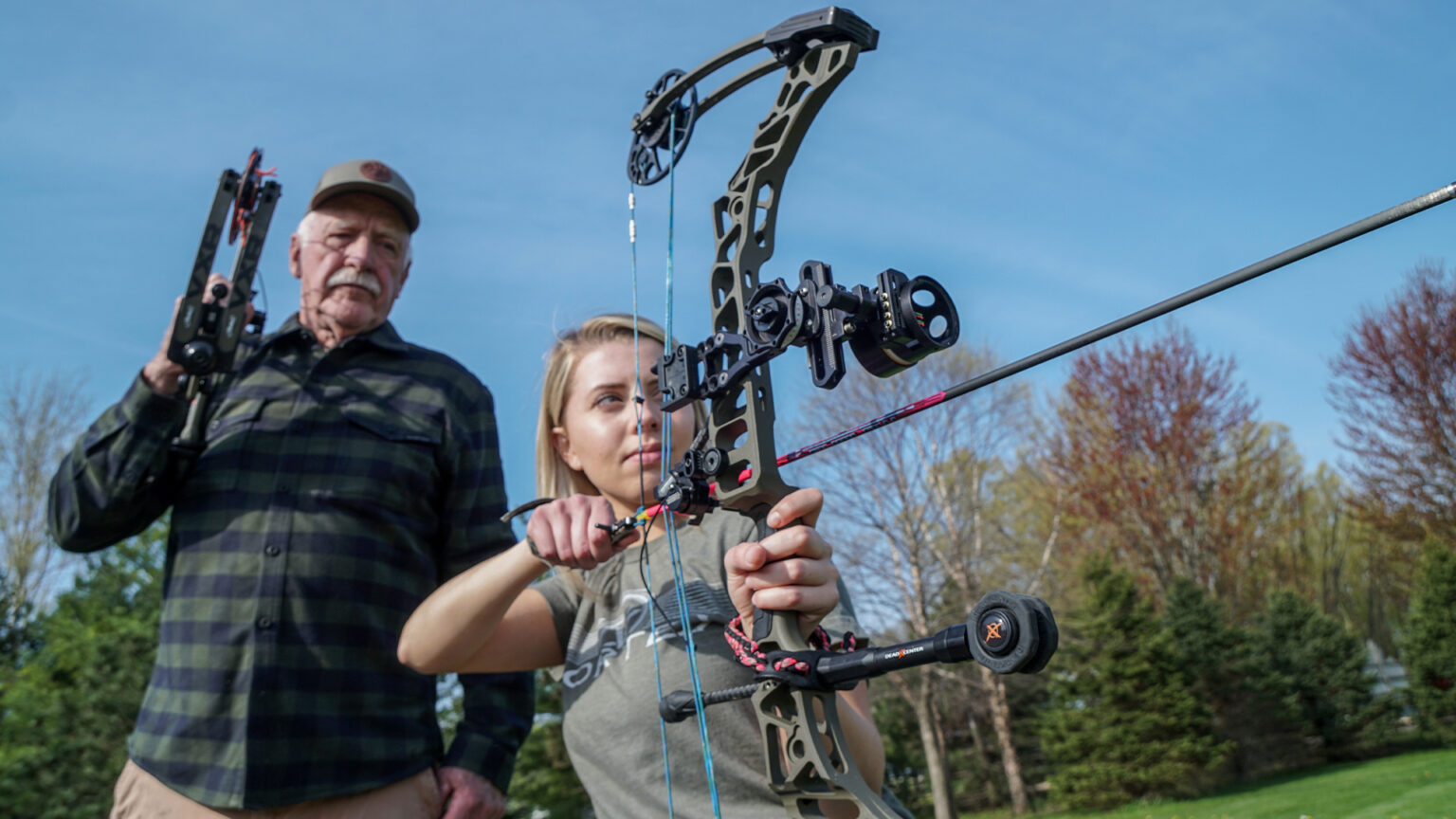
Bowhunting is a very personal sport. The reasons each hunter goes afield are purely subjective and so is the hunting equipment they use. This is clearly evident by the incredible amount of bow accessories made available to today’s archer.
These accessories allow bowhunters to completely customize their bow to give it a unique look and feel while increasing performance and shooting accuracy.
In its most technical definition, an accessory is a complimentary or supplementary object, used for convenience, attractiveness or to enhance performance.
This excludes any necessary piece of equipment on your bow like your string simply because you can’t shoot a bow without a string. All other gear attachments are considered bow accessories and we are going to take a look at many of them.
Bow accessories certainly have come a long way over the past several decades. Stabilizers that were once solid pieces of metal meant as a simple counter balance are now noise and vibration reduction devices.
Metal sight pins painted with white-out have been replaced by wrapped fiber optics, and flipper-style rests have upgraded to micro adjustable drop away rests. With today’s bow accessories, your possibilities are endless in terms of customizing your setup to meet your needs.
Bow Sights
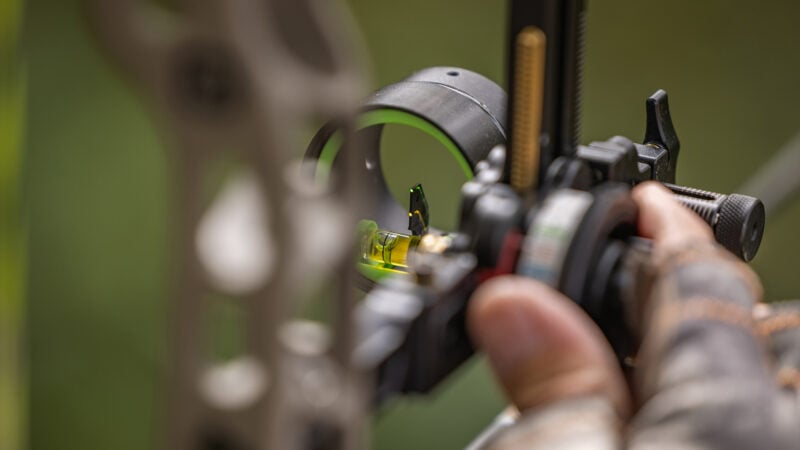
One of the first accessories you’ll want to purchase is a bow sight. The most obvious benefit of a bow sight is improved accuracy over instinctive shooting; especially at longer distances.
Three major features to consider when looking for a bow sight are bright fiber optic pins, a bubble level and circular pin guard. Each of these features can be found on most of today’s sights from $50 economy models all the way to $200 high-end models.
Fiber optic pins provide increased visibility in low-light situations where aiming can become more difficult. Many bow sights now include wrapped fibers that can be several feet long. These fibers help to collect light and focus it at the end of your pin, making it easier to pick out in dim conditions.
When using a sight with fiber optic pins, be careful not to break a fiber. In cold conditions the fibers can become brittle and easily broken if caught in a branch on your way to your treestand. A few sights, such as the Axcel Armortech, now feature fully protected pins to prevent this from happening.
A circular pin guard works as an anchor reference when using in conjunction with peep sight. Many archers will align the circle of their peep with the circular pin guard in order to provide more consistency and accuracy.
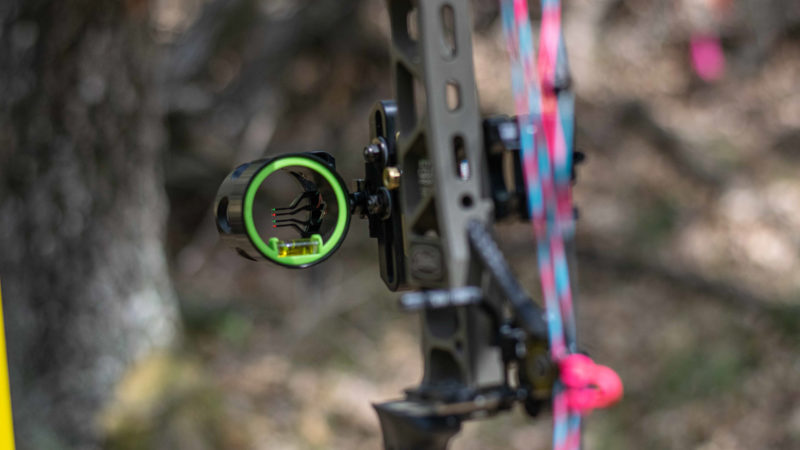
Having a bubble level with ensure you maintain level form in all types of shooting conditions. Making sure your bow is level every time you shoot will also help to improve your consistency which will be most notable at longer distances.
The number of pins you choose to use on your sight is partially dictated by for far you plan on shooting. If you are hunting whitetails from a treestand in moderately thick timber, then 3 pins sighted in at 20, 30 and 40 yards may be sufficient.
However, if you hunt the open plains or Big Sky Country out West and are comfortable and confident shooting long distances, 5 pins sighted in at 20, 30, 40, 50 and 60 yards might best suit your needs. How many pins you use is entirely up to you, however, when sighting in your bow, be sure you keep your increments consistent.
Pin diameter is another factor to consider when looking at bow sights. Most sight manufacturers produce sight pins in three sizes, .010”, .019”, and .029”. Some deer hunters argue that a larger pin diameter that covers more of the target minimizes picture movement and increases accuracy.
The argument for smaller pins is one of precision. The smaller the pin the more precise the aiming; aim small, miss small. Some sight manufacturers are now offering decreasing pin configurations, meaning pins used for closer distances are larger in diameter than those used at longer distances thus providing more accuracy at down range targets.
Peep Sights
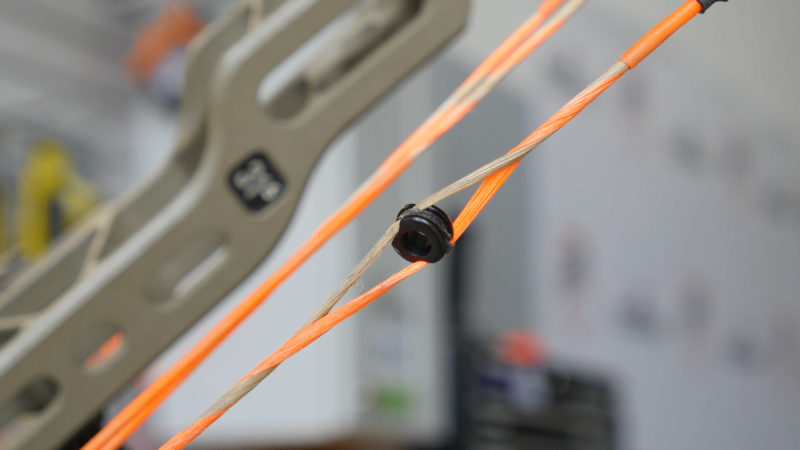
Peep sights, which are tied into your bow’s string, reinforce a consistent anchor point and thus greatly improve shooting accuracy which can translate into more confidence when hunting.
There are many popular models on the market today and they come in several colors that allow you customize your bow. Peep sight manufacturers offer peep sights in some or all of these sizes: 1/32”, 3/64”, 1/16”, 3/32”, 1/8”, 3/16” and ¼”. Generally speaking, the larger the peep sight the better for hunting because it increases light availability during low light shooting conditions and the easier it will be to recognize your sight pins.
Most hunters favor the 3/16” or ¼” models. Most target archers, however, prefer smaller diameter peep sights as they tend to be more accurate.
Arrow Rests
An arrow rest is the most important accessory you can put on your compound bow when it comes to accuracy. There are not only several different rest manufacturers to choose from, but there are several different types of rests as well. The most commonly used arrow rests are shoot-through rests, drop away rests, and full containment rests.
Shoot-through rests have been around for years and are still very popular with target archers, but have lost favor with many bowhunters. While these prong-style rests offer great accuracy when set up properly, they do not offer much in the way of securing your arrow on your bow during a hunting situation. Furthermore, they can present fletching clearance issues if not configured correctly.
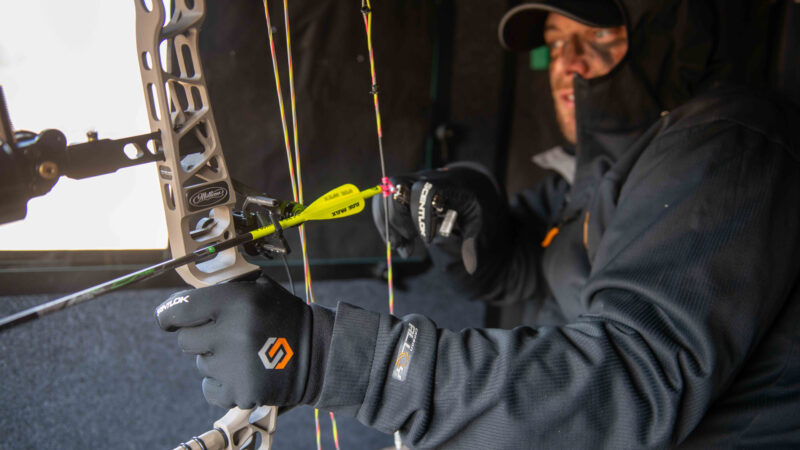
Drop away rests have picked up quite the following in the last decade or so. These rests typically use a short rope tethered to the downward moving buss cable of your bow to pull them up when you draw your bow. As you release the rest falls away and allows your arrow to move forward with no fletching contact.
Drop away rests are becoming increasingly popular for hunting and target shooters alike because they are so forgiving. When properly set up and tuned, a drop away rest will virtually eliminate fletch to rest interference to ensure true arrow flight.
Should a shooter torque the bow handle with their hand, a drop away rest will minimize this error because the arrow arm falls down and does not come in contact with the arrow.
A drop away rest is also extremely beneficial for “reloading” another arrow. Since the shooter doesn’t have to gently place an arrow inside a split-prong launching arm, you can simply nock an arrow and place it on the arrow trough and you are ready to shoot again! These few seconds can make or break a second chance at a buck in the treestand.
The final arrow rest option, that is also very popular with bowhunters, is the full contain or “biscuit style” rest. This arrow rest provides a secure holder that keeps your arrow in place no matter the angle you hold your bow. With the possibility of the arrow falling off the rest virtually eliminated the full containment rest is as close to “fool proof” as you can get.
One drawback, however, to this style arrow rest is the increased chance for fletching contact on the bristles of the rest as it passes through. Although target archers may have a legitimate reason for not wanting any fletching contact whatsoever, tens of thousands of bowhunters can attest to the effectiveness of a full containment rest in hunting conditions.
Quivers
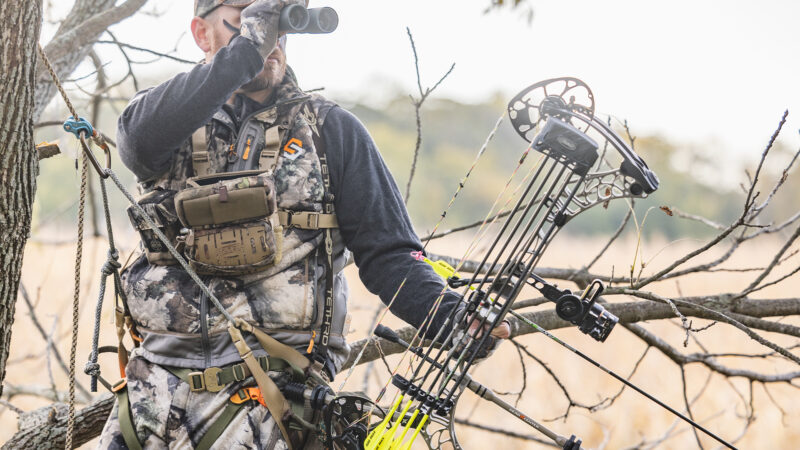
Another bow accessory that demands attention is the arrow quiver. After all, how else are you going to carry your extra arrows when you go bowhunting? There are essentially three types of quivers available, and each offers beneficial features when used in the right hunting situation.
The most common is a bow-mounted quiver. Mounted directly to the riser of your bow, these quivers are the most convenient and easy way to carry and store arrows. This style of quiver is available in two options; single piece or dual piece. Single piece quivers and generally removable from your bow and mount using a plate and latch system, while dual piece quivers are permanently mounted to your bow’s riser and designed not to be removed. A bow mounted quiver also provides the easiest and quickest access to your arrows as well.
If you plan on hunting with a quiver attached to your bow, practice with your quiver attached to your bow! This not only increases shooting familiarity, but a bow mounted quiver can alter accuracy if it has not been tuned to accurately shoot with a quiver mounted to it. Conversely, if you plan on hunting without a quiver attached, practice without the quiver attached.
Backpack style quivers are a good choice for hunters who will rarely be in position to nock an arrow quickly. They are handy when it comes to transport and safely store arrows, but it takes time and effort to remove an arrow for a second shot. Backpack style quivers are popular choices for treestand hunters.
Hip-Mounted quivers, while not as popular today as they once were, are another good option for hunters who prefer to keep their hunting bows light weight. Although they can be cumbersome to walk with at times, they allow you to keep your arrows close by for when they are needed.
Today’s quivers may vary in style and size, but they do not differ in purpose. All quivers, regardless of type, should meet the following requirements to offer optimum performance. First and foremost they should fully and safely enclose your broadheads to ensure you don’t accidentally cut yourself on the razor sharp blades.

Second, the web system used to secure the arrows must work. If the arrow web is too tight you won’t be able to get your arrows in and out of the quiver easily. If they are too loose you may just find yourself missing several expensive arrows at the end of your hunt. Your quiver must also be easy to attach and detach in the field and practical for you hunting situation.
Many bow mounted quivers available today allow you to position your quiver uniquely on your bow. What separates these quivers from the rest is that they’re virtually infinitely adjustable to fit any bow type and size. This offers both vertical and horizontal adjustments.
Vibration Dampening Accessories
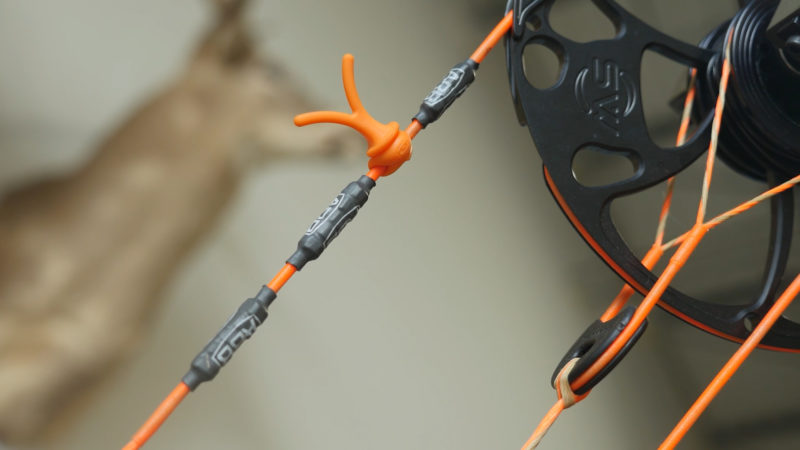
Aside from buck fever, the most common reason for a missed shot is the deer “jumping the string.” That is, ducking underneath the arrow because the sound of the bow travels faster than the arrow, and the deer reacts by ducking and running as you watch the arrow harmlessly sail over its back.
While it’s impossible to prevent this in some cases (those whitetails are crafty creatures), there are several vibration dampening devices that can really lessen the sound produced by your bow.
The first is a vibration dampening stabilizer. Although stabilizers were originally developed as nothing more than a counter balance for some of the very top-heavy bows of the past, most modern bows balance just fine without them.
Today’s modern stabilizers are mostly utilized for their vibration dampening properties. A vibration dampening stabilizer will absorb a lot of the shock and vibration experienced during the shot and will greatly decrease shot sound, thus decreasing the risk of string jump.
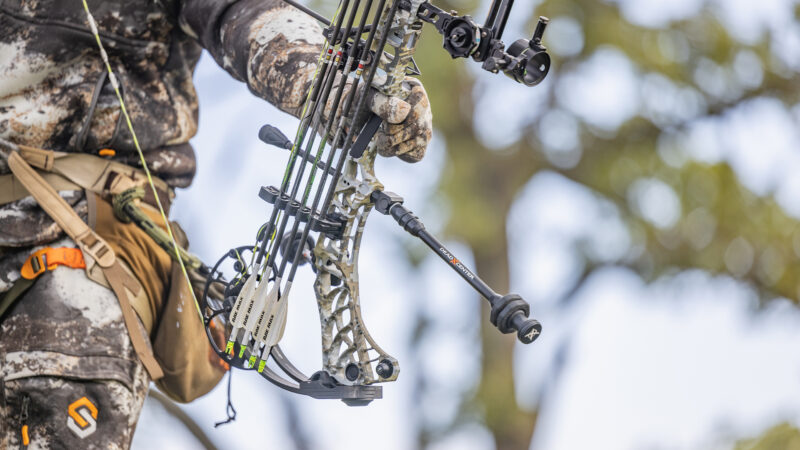
There are also several accessories that can be placed on the limbs of the bow, as well as the string to absorb vibration and reduce sound. Mathews archery produces a product called Monkey Tails that can be easily installed on the string and greatly diminish shot sound, while only sacrificing 1-2 fps of speed.
These small inexpensive accessories are now available in a multitude of colors that allow you to fully customize your bow. Sims Vibration Laboratory also produces some of the most useful vibration dampening products on the market for both solid and split limb bows.
The thin rubber disks can fit and conform to any limb and fit all types of bows. Many archers also place them on their sights and quivers to further quiet down there bow.
A relatively new product that nearly all modern bowhunters have equipped on their bow these days is a quality string stopper, also called a string suppressor. These string stopping devices come in a variety of configurations, but they all work the same.
Their primary purpose is to cushion the string upon release to stop it’s forward momentum and oscillation, which helps reduce bow noise. Mathews Dead End String Stop is a fine example of this product.
They are easy and effortless to install and fist most bows that are presently equipped with a rear stabilizer bushing. The Dead End String Stop eliminates nearly all post release noise and drastically reduces residual vibration after the shot.
Hand Grip
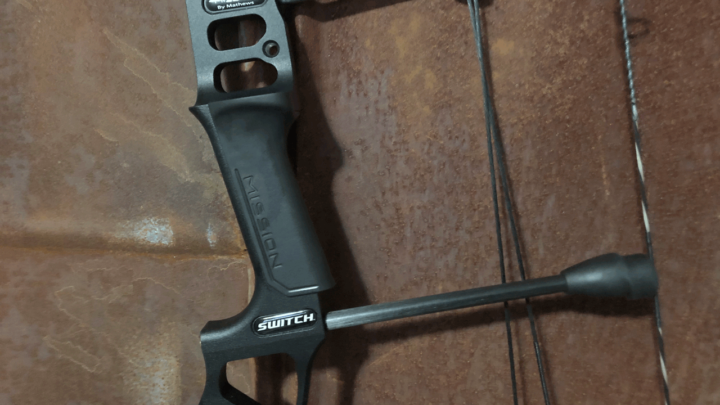
A hand grip isn’t necessarily an accessory because it comes standard on a bow, even one that has been stripped all the way down (there’s always going to be a hand grip), but there are different bow grips out there you can install to fit your needs.
The two most common hand grips available are rubber and wood grain. What you decide on is entirely subjective. Some archers prefer the feel of a rubber grip because they feel it gives them more control.
Wood grain users feel as if the bow feels lighter or and more maneuverable with a wooden hand grip. Again, personal preference is the deciding factor when it comes to a hand grip.
Wrist slings are another bow accessory that is heavily dependent on personal preference. Many archers choose to use a wrist sling so that when shooting with an open-hand style of grip they will not drop their bow upon release.
These too are available many different colors and made of many different materials. However, while many archers feel they need to shoot with them, some feel just as confident shooting without. It’s up to you to decide what you feel most comfortable shooting with.
Conclusion
As you can see, there are a multitude of accessories available for your bow. Some of these accessories are meant to help you, and your bow, perform better while others are merely for cosmetic purposes.
When deciding which accessories to put on your compound bow it’s best to make decisions based on the type of hunting you’ll be doing as well as your budget.
While you can spend hundreds of dollars on things like bow sights and arrow rests, there are also plenty of economical accessories that work just as well.

